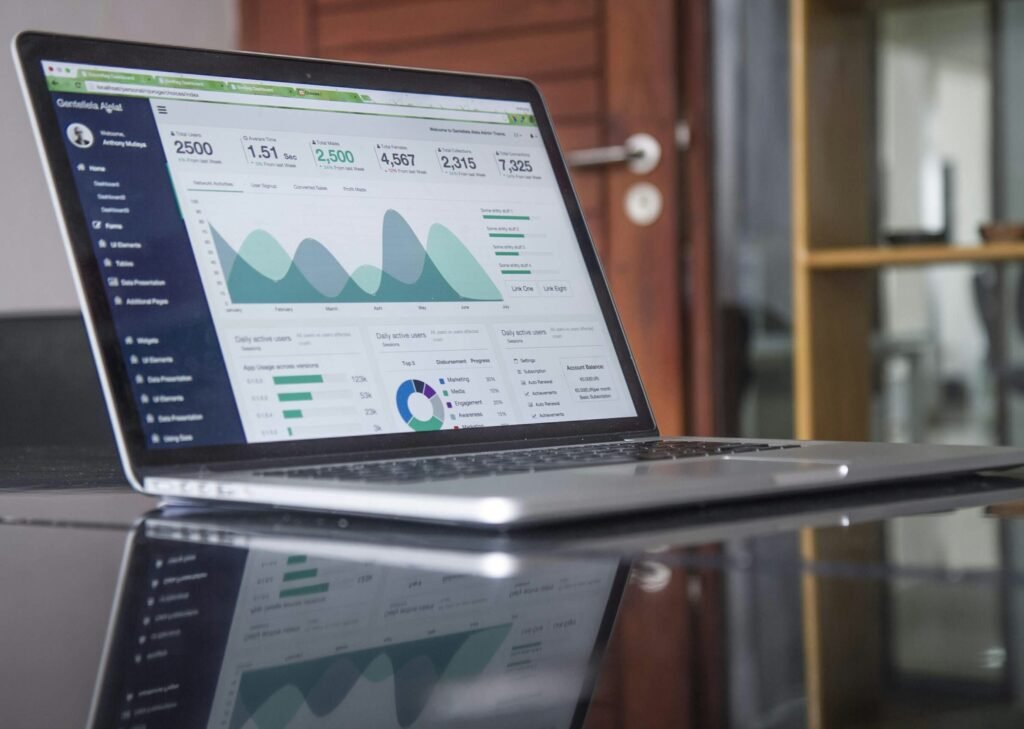Introduction
Have you ever wondered how companies like Amazon and Google are able to predict your shopping preferences or suggest search terms? The answer lies in the world of data analytics. In this comprehensive guide, we will walk you through the basics of data analytics tools and how you can get started using them to make sense of massive amounts of data.

This image is property of images.unsplash.com.
What is Data Analytics?
Data analytics is the process of analyzing, processing, and interpreting data to extract meaningful insights and make informed decisions. It involves using various tools and techniques to uncover patterns, trends, and relationships within datasets. By harnessing the power of data analytics, businesses can gain a competitive edge by optimizing processes, identifying new opportunities, and mitigating risks.
Let’s break it down
Imagine you have a giant jigsaw puzzle in front of you with thousands of pieces scattered all over the table. Data analytics is like putting together that puzzle, where each piece represents a piece of data. By examining each piece carefully and fitting them together, you can reveal the bigger picture and understand the story that the data is telling you.
Types of Data Analytics Tools
There are several types of data analytics tools available, each serving a different purpose and catering to various levels of complexity. From basic spreadsheet software to advanced machine learning algorithms, these tools can help you analyze and visualize data in different ways.
Descriptive Analytics
Descriptive analytics tools help you understand what has happened in the past by summarizing and interpreting historical data. These tools are useful for generating reports, dashboards, and charts that provide insights into past trends and performance.
Let’s break it down
Think of descriptive analytics as the rearview mirror of your car. It allows you to look back and see where you have been by providing you with a snapshot of historical data. This type of analytics is essential for tracking key performance indicators (KPIs) and monitoring trends over time.
Diagnostic Analytics
Diagnostic analytics tools go one step further by analyzing past data to identify the reasons behind certain outcomes or events. By drilling down into the data, these tools help you understand why things happened the way they did.
Let’s break it down
If descriptive analytics tells you that your sales numbers have dropped in the past month, diagnostic analytics will help you determine the root cause of this decline. It’s like being a detective who investigates the crime scene to uncover the motives and circumstances that led to the outcome.
Predictive Analytics
Predictive analytics tools leverage statistical algorithms and machine learning techniques to forecast future trends and outcomes based on historical data. These tools enable you to make informed predictions and anticipate potential scenarios.
Let’s break it down
Imagine having a crystal ball that can predict the future. Predictive analytics tools are like that crystal ball, allowing you to foresee what might happen next based on patterns and trends in your data. By identifying potential risks and opportunities, you can proactively plan your next move.

This image is property of images.unsplash.com.
Prescriptive Analytics
Prescriptive analytics tools take predictive analytics a step further by recommending specific actions to achieve desired outcomes. These tools not only predict what is likely to happen but also suggest how you can influence those outcomes.
Let’s break it down
Prescriptive analytics is like having a personal coach who not only tells you what to expect in the game but also provides you with a winning strategy. By recommending actionable insights and optimal decisions, these tools empower you to make informed choices that drive positive results.
Popular Data Analytics Tools
Whether you are a beginner or an experienced data analyst, there are a plethora of data analytics tools available to suit your needs. From free open-source software to enterprise-level platforms, these tools offer a wide range of functionalities and features to help you analyze data effectively.
Microsoft Excel
Microsoft Excel is one of the most widely used spreadsheet software that offers basic data analysis capabilities. With built-in functions, charts, and pivot tables, Excel is a great tool for beginners to perform simple data analysis tasks.
Let’s break it down
If you are new to data analytics, think of Microsoft Excel as your starting point. It’s like learning to ride a bicycle before you move on to a motorcycle. Excel allows you to organize, manipulate, and visualize data in a user-friendly interface without the need for complex coding or programming skills.

This image is property of images.unsplash.com.
Google Sheets
Google Sheets is a cloud-based spreadsheet tool that allows you to collaborate with others in real-time. With features like add-ons, macros, and integrations with other Google apps, Sheets is a versatile tool for data analysis and sharing.
Let’s break it down
Google Sheets is like having a virtual whiteboard where you can brainstorm ideas, collaborate with team members, and analyze data together. It’s a convenient and accessible tool that enables you to work on your data analysis projects from anywhere, anytime.
Tableau
Tableau is a powerful data visualization tool that allows you to create interactive and dynamic dashboards and reports. With drag-and-drop functionality and extensive customization options, Tableau is ideal for visually exploring and presenting data.
Let’s break it down
Tableau is like having an artistic canvas where you can paint beautiful pictures with your data. It’s not just about crunching numbers but also about storytelling and engaging your audience with compelling visualizations. Tableau makes data analysis a creative and inspiring process.
Power BI
Power BI is a business intelligence tool by Microsoft that enables you to connect, transform, and visualize data from multiple sources. With features like data modeling, AI capabilities, and seamless integration with other Microsoft products, Power BI is a comprehensive tool for data analytics.
Let’s break it down
Power BI is like having a Swiss army knife for data analysis. It’s a versatile tool that offers a wide range of functions and capabilities to help you tackle complex data challenges. Whether you are a data scientist or a business analyst, Power BI has something for everyone.
How to Choose the Right Data Analytics Tools
With so many data analytics tools available in the market, it can be overwhelming to choose the right tool for your needs. To help you make an informed decision, here are some factors to consider when selecting data analytics tools:
Business Needs
Before you start evaluating data analytics tools, it’s important to understand your business needs and objectives. Consider the type of data you work with, the complexity of your analysis, and the specific requirements of your organization.
Let’s break it down
Think of choosing data analytics tools like shopping for a new suit. You wouldn’t buy a tuxedo for a casual beach wedding or a swimsuit for a job interview, right? Similarly, you need to choose tools that align with your business goals and suit the specific needs of your projects.
Skill Level
Another essential factor to consider is your skill level and expertise in data analytics. If you are a beginner, you may want to start with user-friendly tools that require minimal coding or programming skills. On the other hand, if you are an experienced data analyst, you may prefer advanced tools with complex features.
Let’s break it down
Choosing data analytics tools is like choosing a musical instrument to play. If you are a beginner, you might start with a simple ukulele before you move on to a grand piano. Similarly, it’s important to select tools that match your skills and proficiency level to ensure a smooth learning curve and optimal performance.
Scalability
As your business grows and your data analysis needs evolve, it’s essential to choose tools that can scale with your organization. Look for tools that offer flexibility, scalability, and customization options to accommodate changing requirements.
Let’s break it down
Choosing scalable data analytics tools is like buying a new car that can adapt to different road conditions and passenger loads. You don’t want to invest in a tool that becomes obsolete or insufficient as your data volume and complexity increase. It’s crucial to select tools that can grow with your business and meet future demands.
Conclusion
In conclusion, data analytics tools play a crucial role in helping businesses unlock the full potential of their data and drive informed decision-making. By understanding the types of data analytics tools available, popular tools in the market, and factors to consider when choosing the right tool, you can embark on your data analytics journey with confidence and clarity.
Remember, data analytics is not just about crunching numbers and generating reports; it’s about harnessing the power of data to transform information into actionable insights. Whether you are a beginner or an experienced data analyst, there is a data analytics tool out there for you. So, dive in, explore the possibilities, and unleash the true potential of your data.
Happy analyzing!
